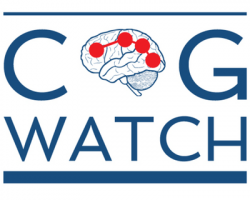After a stroke, patients can suffer from a wide range of problems depending on which area of their brain was affected. Physical impairments, such as problems with motor movements, vision or balance, are addressed with physical therapy but mental impairments, such as problems with language, memory or problem solving, can be harder to identify and can get overlooked during a patient’s rehabilitation.
Stroke patients can have trouble performing ordered sequences of movements, such as those required to make a cup of tea or to brush their teeth. Patients with normal movement of their hands and arms find themselves unable to complete everyday activities because they cannot execute the correct sequence of movements necessary to complete a task. This type of impairment is termed ‘Apraxia and Action Disorganisation Syndrome’ (AADS) by doctors and, although it is hard to diagnose, it is actually quite common.
Recently, scientists in the UK found that perhaps as many as 68% of stroke patients have problems typical of AADS. AADS can have a significant effect on a patient’s recovery after stroke and on their ability to live independent lives in their own homes.
Objectives

Patient assessment
There is no current systematic assessment and classification of AADS patients. No reliable data available.
Systematic assessment and classification of AADS patients in two European countries, UK and Germany. In UK the studies focused on attention and in Germany on language deficits. The classification resulted in different patient categories according to the severity of neurophysiological (e.g., identification of brain areas affected) and cognitive impairments (e.g., identification of affected ADL tasks).
Cognitive feedback
No systematic research on the type of feedback that can be used for optimal rehabilitation of AADS patients.
Systematic research identified exactly the type of sensory (e.g., visual, auditory or haptic) and/or high level (e.g., schemata) feedback that can be used as effective rehabilitation in each of the AADS categories identified in the classification studies.
Length of intervention
There is only evidence for short-term positive outcome of cognitive rehabilitation of apraxic patients.
CogWatch allowed employment of long-term, persistent and continuous intervention. Thus reliable data on the effect of long-term intervention on cognitive rehabilitation was collected.
Type of intervention
Current technology-based rehabilitation systems focus on physiological impairments.
CogWatch delivered cognitive rehabilitation.
Automatic action recognition
No action recognition and prediction algorithms for cognitive rehabilitation.
CogWatch action prediction algorithms were developed based on revised current ADL models from the literature.
